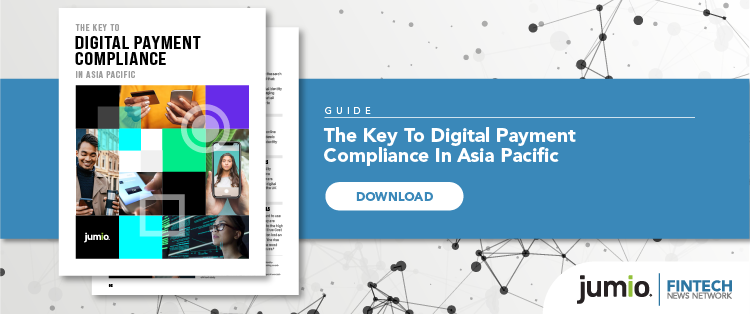The digital payments market in Asia-Pacific is expected to more than triple to US$67.42 billion by 2028, according to a recent estimate. That’s a healthy growth of 21.1 percent CAGR from US$17.85 billion in 2021, fuelled by customers’ familiarity with doing things online, a supportive environment for financial inclusion, and increasing accessibility of technologies.
Such favourable numbers and conditions are bound to attract more competitors to enter the market and higher user expectations for better digital solutions. And payments are merely one part of the whole ecosystem.
The following five whitepapers showcase some recent thoughts and trends in fintech and digitalisation. They offer leading insights into the industry, not limited to digital payments, and where it is heading.
Improving Predictive Modelling Accuracy for Fintech companies with Data-centric AI
Mobilewalla
Make data work more for you. The Improving Predictive Modelling Accuracy for Fintechs with Data-centric AI guide shows you how enriching the foundation of AI can lead to better results. It features a case study demonstrating that “algorithm sophistication cannot compensate for lack of data depth.”
The report touches on these three key points: how data quality, breadth, and depth are crucial to building accurate predictive models; how data enrichment and feature engineering benefit AI in fintech; and why the data-centric AI philosophy is the way forward for the expanding world of AI.
The white paper is prepared by the consumer intelligence and mobile marketing solutions provider, Mobilewalla, which counts Ford, Mindshare, Nokia, Starbucks, and Unilever among its users. An Inc 5000 company, Mobilewalla is familiar with being a market disrupter as it pivots and continuously innovates with data at the heart of its idea – to think, dream and live on.
The Key to Digital Payment Compliance in the Asia Pacific
Jumio
You need accuracy and speed if you’re dealing with online transactions and want to get ahead of the pack. The Key to Digital Payment Compliance in the Asia Pacific provides an in-depth look at what you need to know, including: Know Your Customer (KYC) and Anti-Money Laundering (AML) financial compliance requirements; red flags in fund transfers; optimising the customer experience and protection, and designing effective and efficient compliance flow.
Mobile payments and identity verification company, Jumio shared its industry knowledge and know-how in the report. Founded in 2010, Jumio is trusted by leading companies such as Paysafe, HSBC, and Airbnb and has processed over one billion transactions across 200 countries and territories.
Payments in the Metaverse: (Almost) Everything You Wanted To Know
Openway
Metaverse, NFTs, and cryptos continue making the headlines. There is plenty of interest and investment going into its development. Their potential as the next-level market is enormous, as are its risks.
If you don’t know where to begin understanding this new and evolving space for living and making money, Payments in the Metaverse: (Almost) Everything You Wanted To Know is a good starter piece.
The white paper delves into the different metaverses and the role of payments and cryptocurrency in the meta-economy. It also looks at the strategies businesses are adopting to give you an idea of how to get a slice of the pie or inspire you to develop your solutions. It also addresses the concerns of going into the Metaverse, from first-move advantages to the risks and unknowns.
This detailed guide is produced by top-ranked digital banking and payments provider Openway. Its technology is used by financial and non-financial institutions in 83 countries as part of their digital transformation and to boost the ease and convenience of their payments. Their clients include AIS Thailand, Bank Rakyat Indonesia, Comdata, LOTTE Financial Services, Payoneer, and more.
The Tipping Point for Core Migration
Mambu
Don’t let your legacy core platform hold you back or worse. With advancing technology and market expectations, this is not the time for banks and financial institutions to be complacent. The Tipping Point For Core Migration white paper details the situation.
Moving from a traditional legacy platform to a cloud-native core can save US$246.1 billion, or a 15 percent reduction in IT spending, over five years for banks globally, according to an analysis by Celent and Mambu in the report.
They also looked at the factors considered when deciding to make the switch and how the upgrade can slash the total cost of ownership (TCO).
Mambu is an industry leader in cloud banking and fintech.
Its SaaS cloud banking platform serves over 250 customers, from microfinance institutions and fintech start-ups to telcos and banks, with more than 85 million end users. Bank Islam, Grameen America, Lumi, Mynt, N26, OakNorth, Western Union, and Zest Money are some of the institutions extending their success with Mambu.
Accelerated Build: Bridging the Build vs. Buy Gap
Backbase
To build or to buy? That is the question most banks have when planning to update their infrastructure. However, why choose one when you can do both? That’s the theme in Accelerated Build: Bridging the Build vs. Buy Gap.
The report tackles the pros and cons of build and buying before introducing the hybrid option. It shows how accelerated build can be quick to market and highly customisable. A six-dimensional framework is also provided to guide you in assessing the best route to bring your bank to the next level.
Fintech company Backbase has been helping banks re-architect around the customer since 2003. It continues to improve banking for over 50 million people through its more than 150 financial partners worldwide, such as Berenberg, Greater Bank, State Employees’ Credit Union (SECU), TPBank, and more.
More Resources and Infos
More resources, such as e-books and whitepapers, can be found here: fintechnews.sg/whitepapers
Interested in featuring your whitepaper via EDMs or articles on the Fintech News Network? Request your media kit here:












